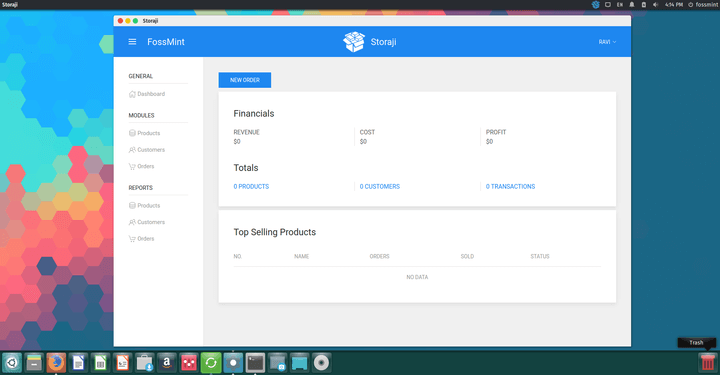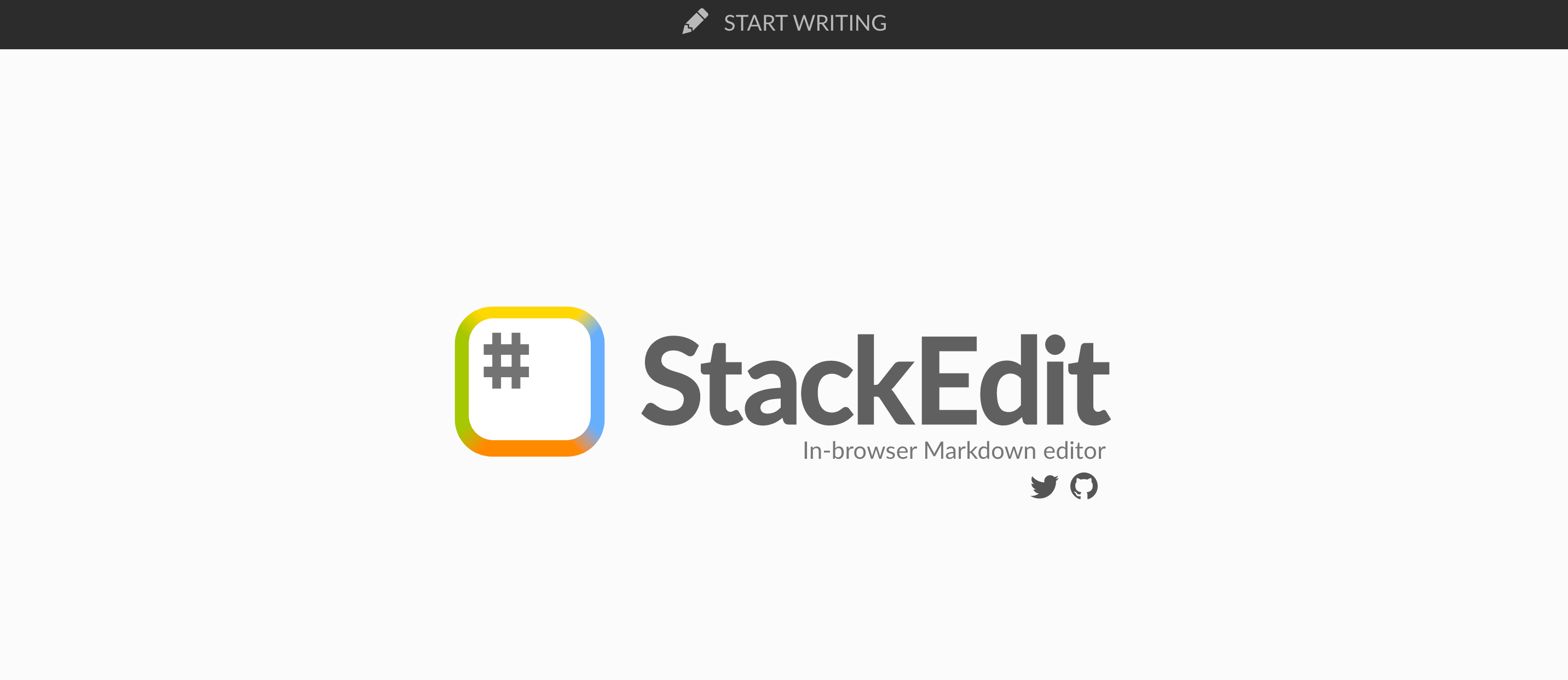Hey! This is just a part of dummy post & content, Written StackEdit1. Don’t delete me, I’m very helpful! I can be recovered anyway in the Utils tab of the Settings dialog.
Documents
Imported documents are downloaded in your browser and are not transmitted to a server. StackEdit is a free, open-source Markdown editor based on PageDown, the Markdown library used by Stack. Shift is a desktop app to manage StackEdit and all of your other apps & email accounts in one place. StackEdit Integration. Syncs with iOS & Android app. StackEditは、PageDown、Stack Overflowおよびその他のStack Exchangeサイトで使用されるMarkdownライブラリに基づく無料のオープンソースMarkdownエディターです。.

StackEdit stores your documents in your browser, which means all your documents are automatically saved locally and are accessible offline!
Note:
- StackEdit is accessible offline after the application has been loaded for the first time.
- Your local documents are not shared between different browsers or computers.
- Clearing your browser’s data may delete all your local documents! Make sure your documents are synchronized with Google Drive or Dropbox (check out the Synchronization section).
Create a document
The document panel is accessible using the button in the navigation bar. You can create a new document by clicking New document in the document panel.
Switch to another document
All your local documents are listed in the document panel. You can switch from one to another by clicking a document in the list or you can toggle documents using Ctrl+[ and Ctrl+].
Rename a document
You can rename the current document by clicking the document title in the navigation bar.
Delete a document
You can delete the current document by clicking Delete document in the document panel.
Export a document
You can save the current document to a file by clicking Export to disk from the menu panel.
Tip: Check out the Publish a document section for a description of the different output formats.
Synchronization
StackEdit can be combined with Google Drive and Dropbox to have your documents saved in the Cloud. The synchronization mechanism takes care of uploading your modifications or downloading the latest version of your documents.

Note:
- Full access to Google Drive or Dropbox is required to be able to import any document in StackEdit. Permission restrictions can be configured in the settings.
- Imported documents are downloaded in your browser and are not transmitted to a server.
- If you experience problems saving your documents on Google Drive, check and optionally disable browser extensions, such as Disconnect.
Open a document
You can open a document from Google Drive or the Dropbox by opening the Synchronize sub-menu and by clicking Open from…. Once opened, any modification in your document will be automatically synchronized with the file in your Google Drive / Dropbox account.
Save a document
You can save any document by opening the Synchronize sub-menu and by clicking Save on…. Even if your document is already synchronized with Google Drive or Dropbox, you can export it to a another location. StackEdit can synchronize one document with multiple locations and accounts.
Synchronize a document
Once your document is linked to a Google Drive or a Dropbox file, StackEdit will periodically (every 3 minutes) synchronize it by downloading/uploading any modification. A merge will be performed if necessary and conflicts will be detected.
If you just have modified your document and you want to force the synchronization, click the button in the navigation bar.
Note: The button is disabled when you have no document to synchronize.
Manage document synchronization

Since one document can be synchronized with multiple locations, you can list and manage synchronized locations by clicking Manage synchronization in the Synchronize sub-menu. This will let you remove synchronization locations that are associated to your document.
Note: If you delete the file from Google Drive or from Dropbox, the document will no longer be synchronized with that location.
Publication
Once you are happy with your document, you can publish it on different websites directly from StackEdit. As for now, StackEdit can publish on Blogger, Dropbox, Gist, GitHub, Google Drive, Tumblr, WordPress and on any SSH server.
Publish a document
You can publish your document by opening the Publish sub-menu and by choosing a website. In the dialog box, you can choose the publication format:
- Markdown, to publish the Markdown text on a website that can interpret it (GitHub for instance),
- HTML, to publish the document converted into HTML (on a blog for example),
- Template, to have a full control of the output.
Note: The default template is a simple webpage wrapping your document in HTML format. You can customize it in the Advanced tab of the Settings dialog.
Update a publication
After publishing, StackEdit will keep your document linked to that publication which makes it easy for you to update it. Once you have modified your document and you want to update your publication, click on the button in the navigation bar.
Note: The button is disabled when your document has not been published yet.
Manage document publication
Since one document can be published on multiple locations, you can list and manage publish locations by clicking Manage publication in the menu panel. This will let you remove publication locations that are associated to your document.
Note: If the file has been removed from the website or the blog, the document will no longer be published on that location.
Markdown Extra
StackEdit supports Markdown Extra, which extends Markdown syntax with some nice features.
Tip: You can disable any Markdown Extra feature in the Extensions tab of the Settings dialog.
Note: You can find more information about Markdown syntax here and Markdown Extra extension here.
Tables
Markdown Extra has a special syntax for tables:
| Item | Value |
|---|---|
| Computer | $1600 |
| Phone | $12 |
| Pipe | $1 |
You can specify column alignment with one or two colons:
| Item | Value | Qty |
|---|---|---|
| Computer | $1600 | 5 |
| Phone | $12 | 12 |
| Pipe | $1 | 234 |
Definition Lists
Markdown Extra has a special syntax for definition lists too:
Definition C
Definition D
part of definition D
Fenced code blocks
GitHub’s fenced code blocks are also supported with Highlight.js syntax highlighting:
Tip: To use Prettify instead of Highlight.js, just configure the Markdown Extra extension in the Settings dialog.
Note: You can find more information:
- about Prettify syntax highlighting here,
- about Highlight.js syntax highlighting here.
Footnotes
You can create footnotes like this2.
SmartyPants
SmartyPants converts ASCII punctuation characters into “smart” typographic punctuation HTML entities. For example:
| ASCII | HTML | |
|---|---|---|
| Single backticks | 'Isn't this fun?' | ‘Isn’t this fun?’ |
| Quotes | 'Isn't this fun?' | “Isn’t this fun?” |
| Dashes | -- is en-dash, --- is em-dash | – is en-dash, — is em-dash |
Table of contents
You can insert a table of contents using the marker [TOC]:
[TOC]
MathJax
You can render LaTeX mathematical expressions using MathJax, as on math.stackexchange.com:
The Gamma function satisfying $Gamma(n) = (n-1)!quadforall ninmathbb N$ is via the Euler integral
Tip: To make sure mathematical expressions are rendered properly on your website, include MathJax into your template:
Note: You can find more information about LaTeX mathematical expressions here.
UML diagrams
You can also render sequence diagrams like this:
And flow charts like this:
Note: You can find more information:
- about Sequence diagrams syntax here,
- about Flow charts syntax here.
Support StackEdit
StackEdit is a full-featured, open-source Markdown editor based on PageDown, the Markdown library used by Stack Overflow and the other Stack Exchange sites. ↩
Here is the text of the footnote. ↩
Demonstrates how to use Stacked Column API to render Stacked ar Chart in SciChart Android. A Stacked Bars chart is a Stacked Column chart rotated 90 degrees, so that the columns are rendered horizontally. In order to achieve this effect, we create a Stacked Column chart, then use the XAxis and YAxis alignment to rotate the chart.
When you add multiple StackedColumnRenderableSeries into VerticallyStackedColumnsCollection for vertical grouping or into HorizontallyStackedColumnsCollection for horizontal grouping it allows to render them stacked one above another or side by side. Data provided by its DataSeries can be used to render an XyDataSeries (which contains one X-point and one Y-point), XyyDataSeries (renders Y values), XyzDataSeries, HlDataSeries and OhlcDataSeries(renders Close values). Columns are drawn using the pens provided by the setStrokeStyle(PenStyle) (outline) and using the Brush provided by the setFillBrushStyle(BrushStyle) (fill).
Tip!
Bold
Do you need to change the width of a column? Try calling the setDataPointWidth() method passing in any number from 0.0 to 1.0. This alters how much space a column takes up.
